 |
Choosing media and format: general recommendations. |
Scholarly texts such as journal articles and literature indexes are very important as of today. However, they are outdated formats and need advancement to compete with the digital revolution of the world wide web. Depending on your targeted audiences and communication objectives, more visual formats like videos or animations might be more suitable to achieve a good impact.
Choosing media and format of your communication strongly depends on your communication objectives, i.e. what you want to achieve. There are many ways to communicate your research, e.g. direct messages, blog post, tweeting about it or putting your research on Instagram. Think about who you are trying to reach, what the message has to be, and what your audience should be able to do with it (e.g. further sharing it, working with it, making a song out of it).
Form and content go hand in hand. The way the message is delivered is like a message itself. You can share your key message to reach your target audience as passive listeners. However, you can also activate your target audiences and enable them to become active or do something with the content that you provide. Social media and other platforms offer various possibilities not to only passively share your messages, but also to actively involve your target audiences.
 |
Here you will find recommendations for disseminating research beyond academic venues. |
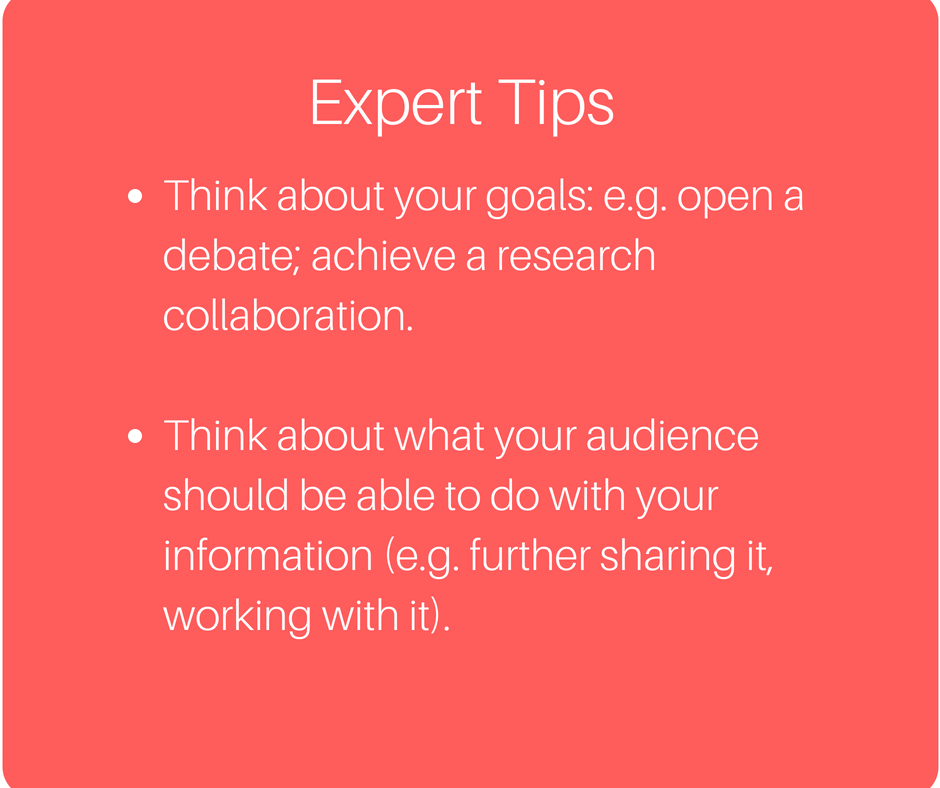
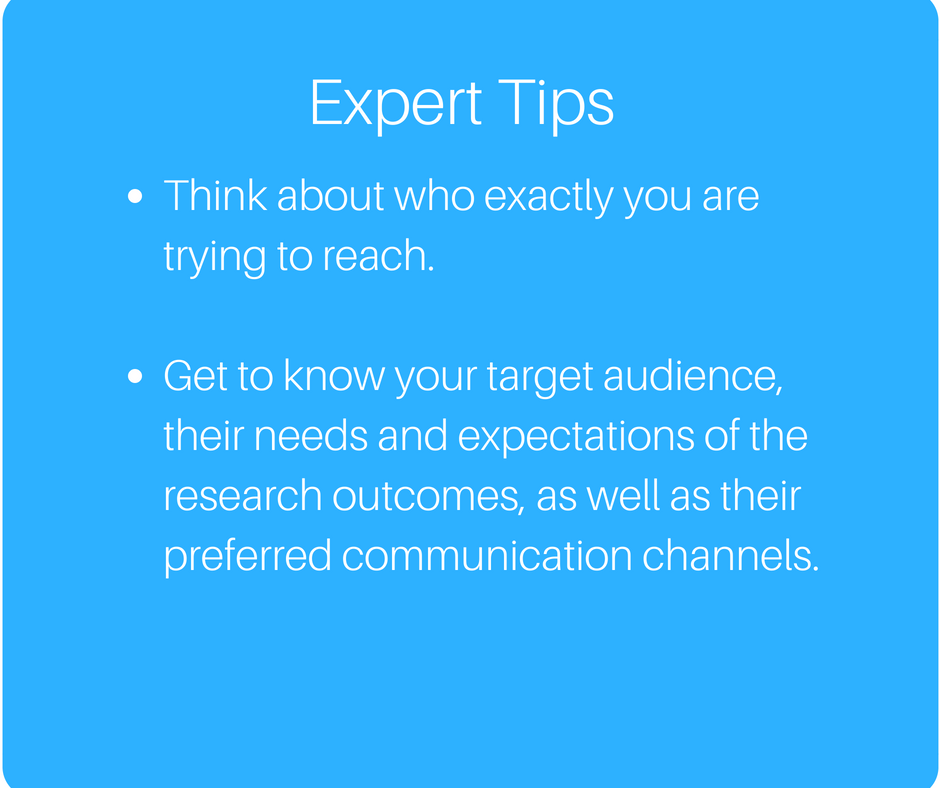
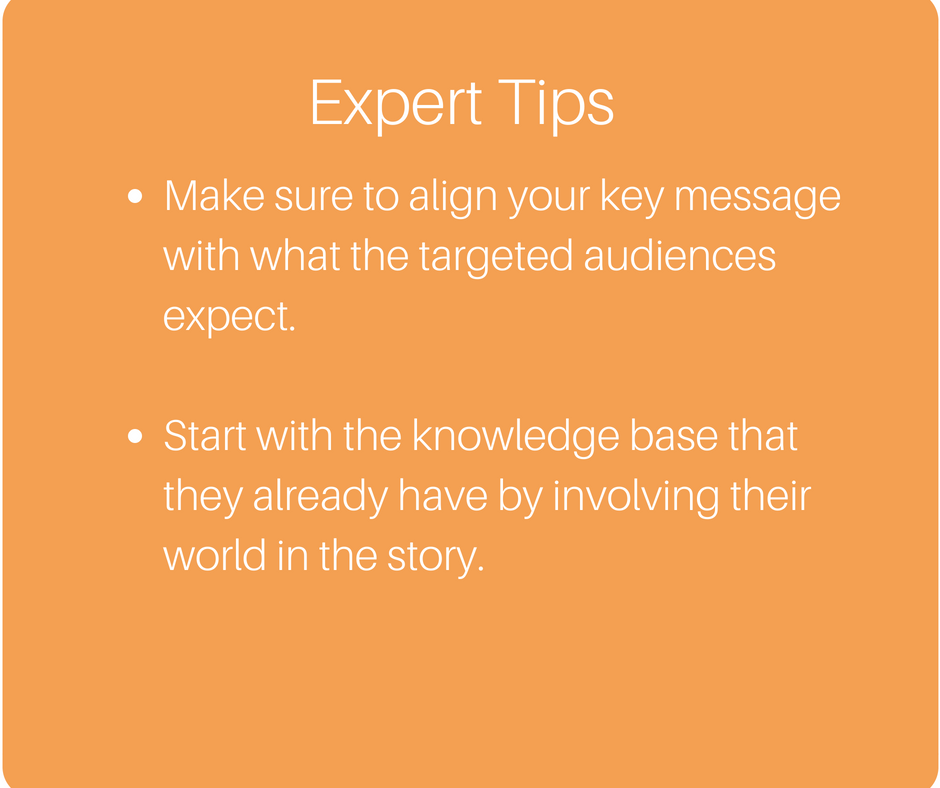
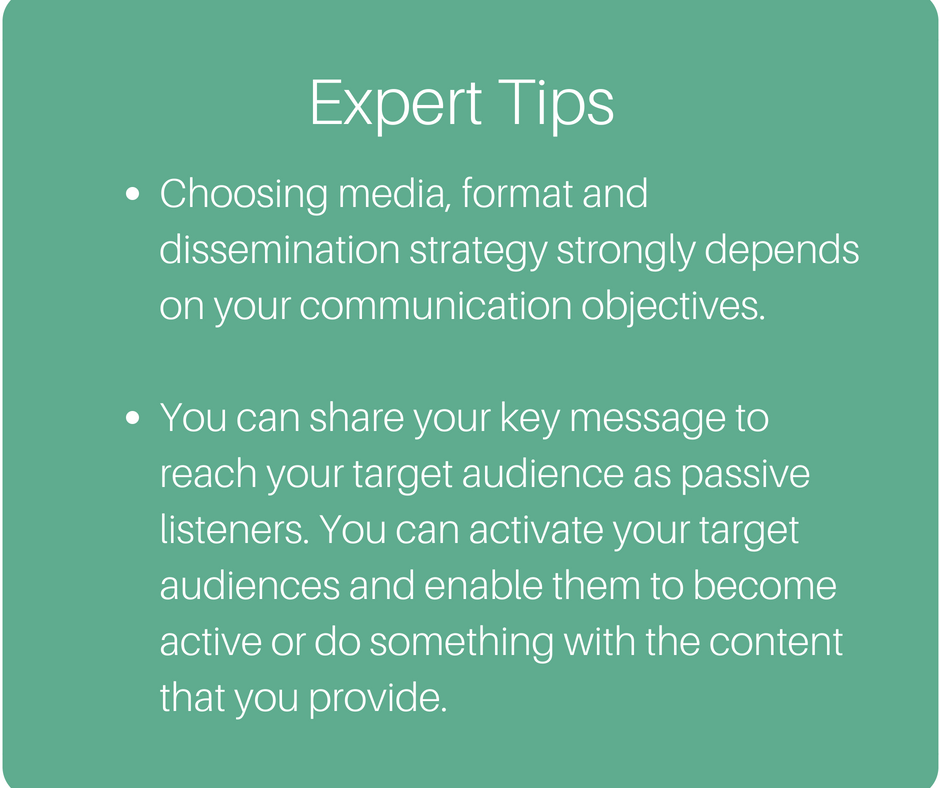
 |
Defining the "who" in research communication and sharing tips to reach all target groups. |
Research communication and dissemination play a major role to enable inclusion and participation of all these stakeholders. For results generated in European projects the European Commission distinguishes four main stakeholders and target groups:
In these guidelines, we particularly focus on reaching industry/innovation (businesses) and civic society/citizen (general public) target groups. However, these target groups are very broad, and for a targeted communication and dissemination it is necessary to specify those target groups further (e.g. large companies, SMEs, startups, business sector/company associations, creative industry, NGOs, CSOs, citizens, elderly people, maker community, etc.).
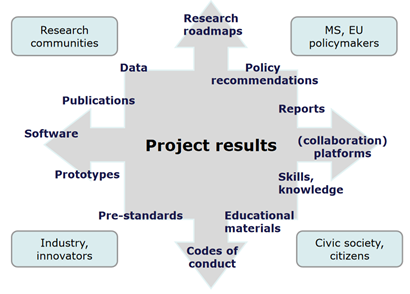
It is important to disseminate specifically to target groups. A crucial element is to get to know your target audience. If possible, it is recommendable to meet representatives from the target groups in person (e.g. contacts from a company that you are already in contact or negotiating with) and to directly ask them about their needs and expectations of the research outcomes. Then you can tailor your dissemination/communication material and strategy accordingly.
Another advice if you are dealing with a very specific and small target group (e.g. policy makers): Invite them to discuss the expected outcomes before writing the final document that they will receive. Having a dialogue in advance is as important as the final document itself.
Once you know your target group, it is essential to define the key message that you want to communicate. In general, it is important to make sure that the key messages and information that you provide is relevant for the targeted audience. A good recommendation is to explicitly include the audience in the material that you produce (e.g. a dossier, brochure). Write about your audience to make sure that the information contained specifically relates to them and is relevant.
A tip that works for all communication formats: present the information always thinking about your target audience. Try to understand what type of information they will need from you. If they are consumers they do not need to know how it works, just how it is going to benefit their life. Industry might be interested in more details. Always think of what THEY want to hear from you, not what you want to tell them. You do not need to talk to all audiences at the same time.
 |
What is Research Dissemination? Here you will find the definition of Dissemination according to OpenUP project and European Commission. |
According to the EC’s definition, communication in EU projects has the purpose to:
The Commission recommends to strategically communicate research project outcomes by following these three principles:
Definition of dissemination adopted by OpenUP:
Dissemination is an activity that can be targeted at academia as well as at broader audiences. One of the crucial characteristics is that dissemination facilitates research uptake and understanding. It is a planned process that involves consideration of target audiences; consideration of the settings in which research findings are to be received; and communicating and interacting with wider audiences in ways that will facilitate research uptake in decision-making processes and practice (where appropriate).
 |
Here you will find guidelines on defining communication objectives and structuring key messages |
For defining your communication objectives, think of what you want to achieve with your communication to the targeted audience. What is the purpose of the communication to the specific target group? For instance, it makes a difference whether you want to open or contribute to a debate, or to achieve a research collaboration. There are different ways to spread information depending on what you want to achieve. This goes for both general public and business target audiences.
Once your communication objectives are clear you can start structuring your key messages and adapting them to the media format and channels to be used. The format will heavily impact the structure of the information.
In general, it is recommendable to structure the information in several layers:
Even if it does not explain every single detail the information gets more credible and transparent this way.
To structure the information about your research, you can use a model used in writing courses. A page of information (e.g. webpage, poster) should have an OIA structure: Orient, Inform, Activate. The scope is to give 1) a general view of the topic, 2) to inform your target audiences, and 3) to stimulate their active participation or interaction. Inform and activate your audiences about current developments by, e.g., providing a steady feed of curated and summarized/explained knowledge; providing (raw data) or raw information; and providing information and knowledge on how to use/apply this information in their daily practice.
Standard report templates with an introduction to the problem, solution and conclusion section are appropriate for target audiences interested in technical details. However, to enable a low-level entry to the topic other formats should be used.
This category used to be called "Projects" w/ alias "projects-d"

